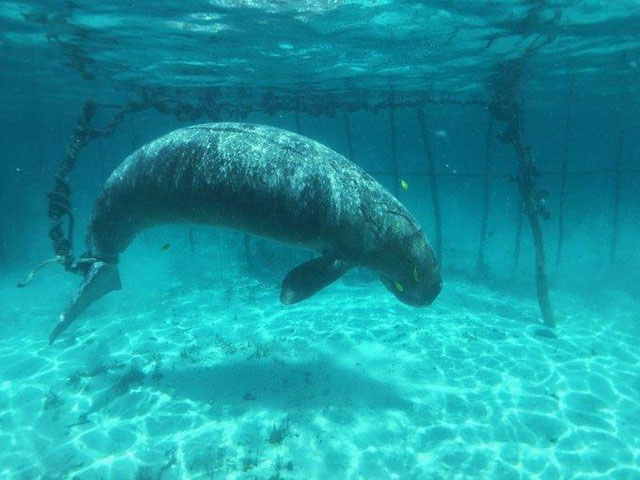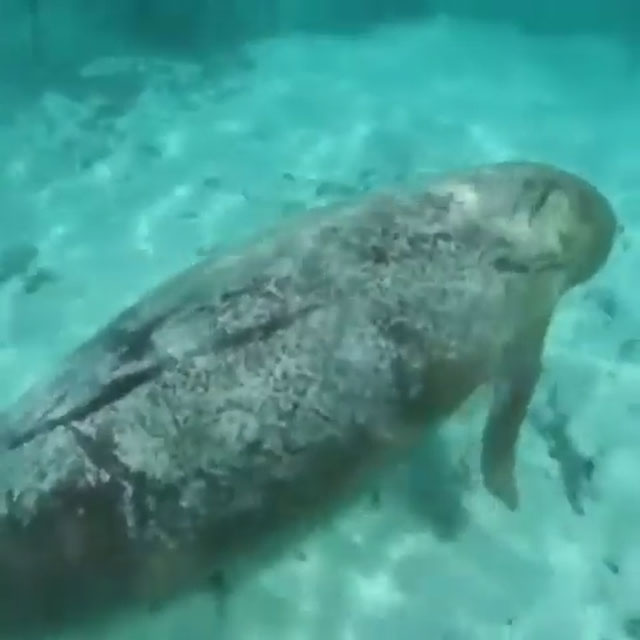For the sake of making money, many people ruthlessly exploit and trample on all living beings on Earth.
Kokoya Sea, a small island in the Maluku archipelago, is a place of pristine nature that has not yet been affected by tourism, featuring picturesque landscapes and a peaceful environment, often likened to a paradise in Indonesia.
When visiting Kokoya, tourists can immerse themselves in the fresh, unspoiled nature, observing various species of fish swimming gracefully in the crystal-clear waters. To maintain the most pristine and clean environment, the Kokoya island authorities have established a team of divers dedicated to cleaning and caring for the biological system here.
On that day, a group of divers eagerly carried out their assigned tasks as usual. When diving to a relatively deep depth at the ocean floor, the group suddenly discovered something unusual.
Delom Lim, a member of the group, recounted: “At the ocean floor, where the light flickered, we saw an object that looked like a box left behind underwater. As we got closer, we realized it resembled a steel cage that someone had placed on the seabed. More horrifying, this steel cage was used to confine two rare dugongs.”
Dugong, also known by various names such as sea cow or Dugong dugon, is a species typically found in shallow waters and coastal areas between the Indian and Pacific Oceans. Although referred to as a fish, it is actually a marine mammal. Legend has it that Western sailors, upon seeing dugongs underwater, mistook them for humans, which led to the creation of ancient legends about “mermaids.”
Dugongs are marine mammals with gray skin and are closely related to elephants. Unlike land animals such as cows or rabbits, dugongs have very little hair. Their skin is almost smooth, with only a few sparse hairs. This creature has a round head, small eyes, and a large snout. Their limbs resemble paddles and lack nails.

Two giant dugongs trapped in a steel cage on the ocean floor.
They often use their thick lips to graze on seagrass on the ocean floor. Male dugongs sometimes grow long teeth similar to tusks. They have wide, flat teeth suitable for eating algae.
However, because their diet consists mainly of plants, which are often low in nutrients, dugongs have a very long digestive system (45 meters) to maximize nutrient absorption. Their stomachs are similar to those of land cows.
Globally, dugongs face intense hunting for their meat, skin for food, and teeth for medicinal purposes or jewelry. This species is classified as Critically Endangered (CR) and is listed as vulnerable by the International Union for Conservation of Nature (IUCN).

With numerous visible scars on their bodies.
Due to their rarity, Lim speculated that local people may have captured this pair of dugongs to profit from tourists. Specifically, they might offer diving tours to observe and photograph these endangered creatures.
Seeing the numerous scars on the tails of the pair of dugongs brought sorrow to everyone in the diving team. It is likely that the dugongs had been held captive here for weeks. Despite the rescue efforts of the diving team, those “making money” from the bodies of these creatures continued to obstruct them. Ultimately, thanks to the assistance of wildlife conservation agencies, the pair of dugongs were freed and returned to the deep blue sea.

















































